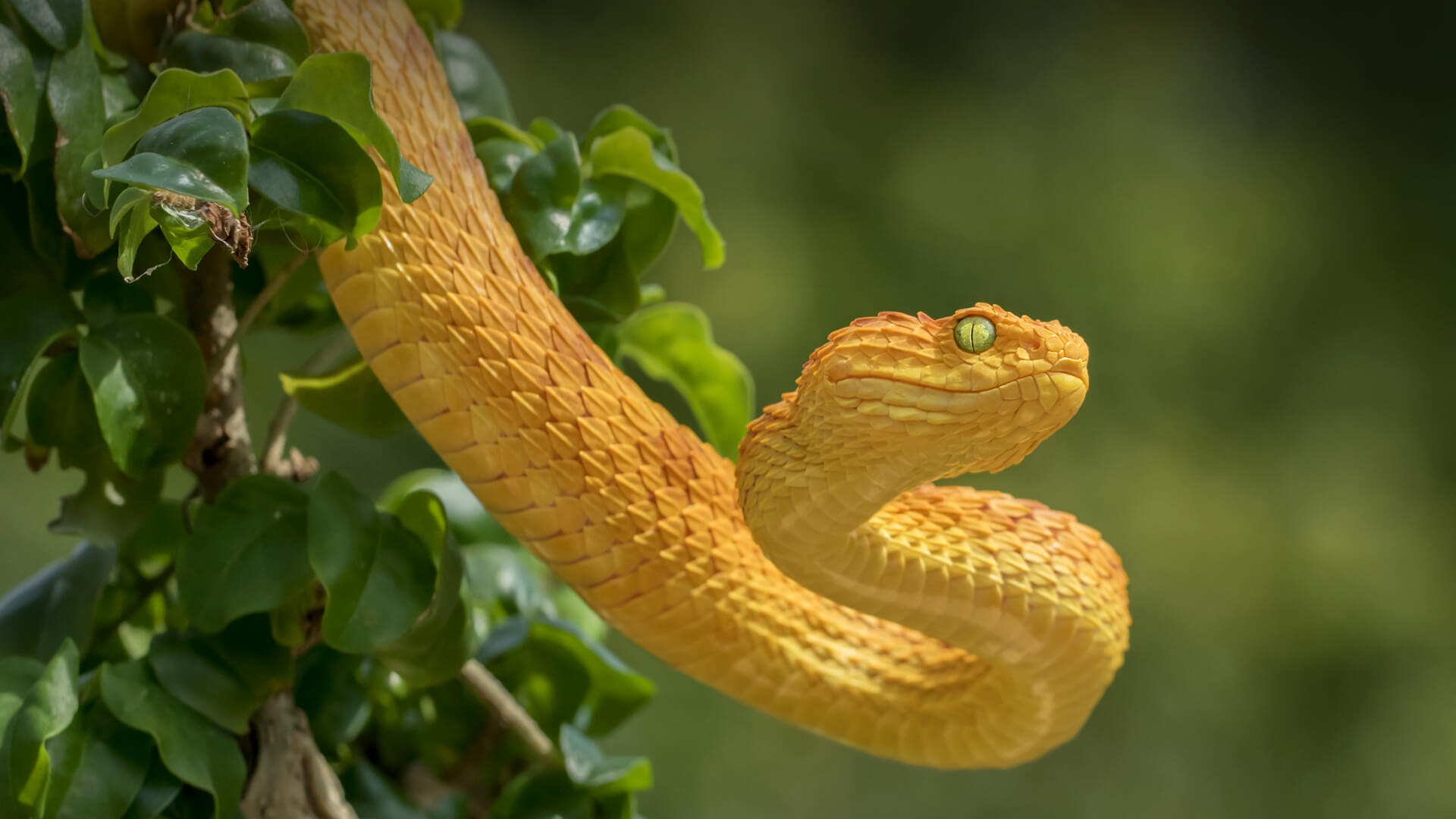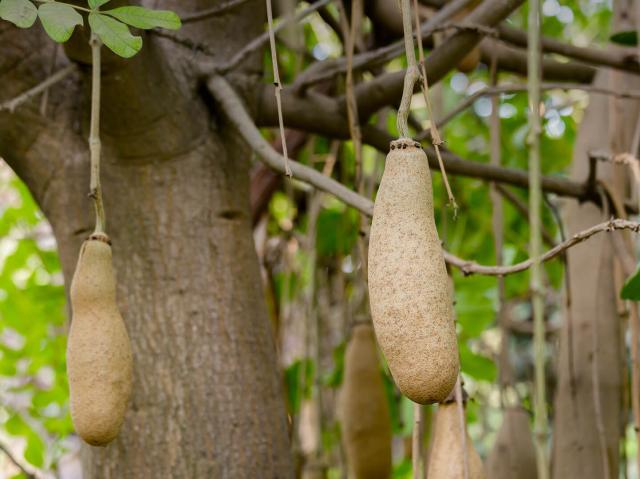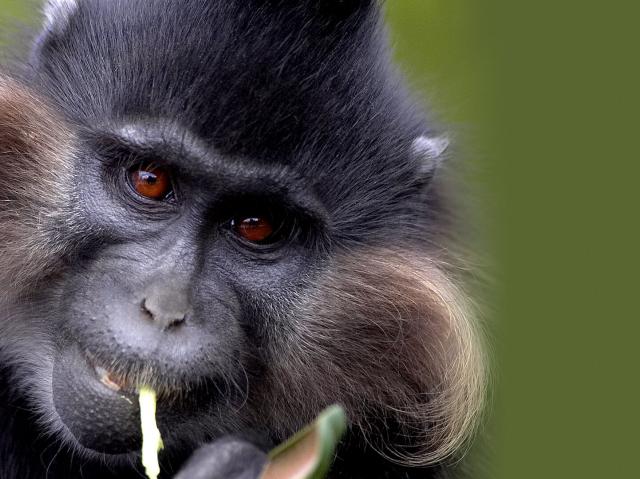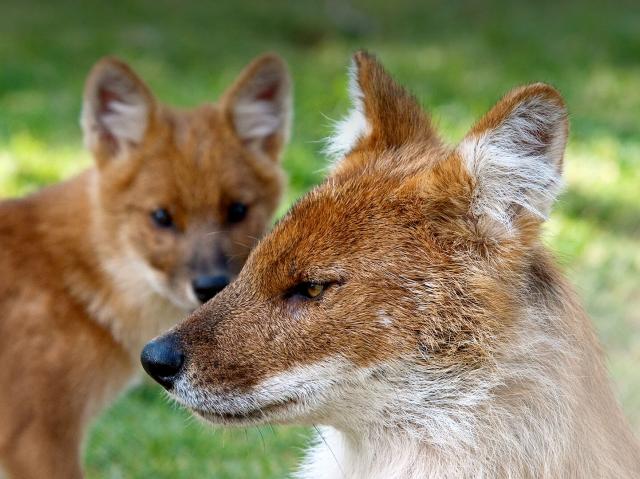
Snake

- CLASS: Reptilia (Reptiles)
- ORDER: Squamata
- FAMILIES: 17
- GENERA: About 420
- SPECIES: 2,978 known

ABOUT
SSSSensational serpents! Snakes, by and large, get a bum rap. Many people have a deep fear of these reptiles. Their long, slender bodies and lack of legs, eyelids, or ear flaps distinguish snakes from all other reptiles. They are covered with back-folded and pliable skin sections called scales. The skin between the scales is called interstitial skin. Like their reptile brethren, they use the heat of the surrounding air to regulate their body temperature. A flexible body allows snakes to stretch out to warm up quickly, to curl up to conserve body heat, or just to warm a particular part of the body.
It’s surprising how easily a snake can get from one spot to the next. By squeezing and relaxing the muscles down each side of its body, a snake is able to move forward. Most people think of "slither" when asked how a snake moves, but for a group of reptiles with the same basic body structure, different snakes can move in a surprising variety of ways. Even the way they slither can vary widely.
Special flattened scales on the underside of their bodies, called ventral scutes, give snakes traction. Snakes with scutes on just the underside of their body tend to move slower; faster snakes have scutes that extend upward to the sides of the body: the more scutes, the faster the snake. However, sea snakes have flattened tails that they use like paddles to propel them through the water, and some tree snakes are called flying snakes, although they don't really fly but flatten their body and spread their ribs to glide from tree to tree.
Snakes don’t have eyelids, so they can’t blink or close their eyes to sleep. Sometimes Zoo visitors think a snake is staring at them through the viewing glass, but maybe the snake is really just sleeping—it’s hard to tell. Snakes can’t see very well anyway and seem to notice objects only if they move. Most of the time they sense their prey through vibrations caused by movement. Snakes are sensitive to vibrations, particularly those made by their prey, but their most acute sense is smell.
HABITAT AND DIET
Snakes are found living on land and in water, as well as in every habitat imaginable—on every continent except Antarctica.
The can be found in open oceans, vast deserts, and mountain regions at altitudes of over 10,000 feet (3,000 meters). Those that live in places where it gets very cold in winter may hibernate in deep, underground dens, remaining dormant until spring brings warm weather again. Snakes that live in desert habitats often spend the heat of the day in burrows dug by other wildlife.
All snakes are strictly carnivores and have quite a varied diet: they eat mammals, such as mice, rats, and rabbits, fish, frogs, or even other snakes! There are some snakes that only eat eggs, usually those laid by birds. To get through that hard shell, an egg-eating snake has sharp bones in its throat that cut the egg open as it is swallowed. They then spit the shell pieces back out.
Snakes find their prey in a variety of ways: by sight, by using heat-sensing pits on the sides of their head (these snakes are called pit vipers) or on the lips of some boas and pythons, by sensing vibrations with their body, or "tasting" the air with their tongue to see what's nearby. Snakes have two main methods of finding food: active hunting for food or sitting in ambush, waiting for food to come to them. It's usually the larger snakes, like pythons, boas, and vipers that use the "sit-and-wait" technique, but even these snakes may have to move to another area from time to time if they are not successful.
Snakes can strike (or reach forward quickly to grab their prey) with amazing speed. Some just snatch small prey and begin swallowing immediately, others grip and constrict around their prey, squeezing tighter each time the victim exhales. These constrictors feel the heart beat of the prey and constrict until it stops. Venomous snakes inject a toxic complex protein into their prey that kills or paralyzes it.
Spitting cobras have modified fangs that squirt venom up to 6 feet. This is strictly a defense mechanism and benefits both snake and its predator by eliminating any physical contact. The venom severely incapacitates would-be attacker but does not kill it as a bite would. People often fear snakes for their venom, but only a third of snake species are venomous, and human deaths from snakebites are very rare.
Snakes don’t use their teeth to chew their food—they just swallow it whole. Can you imagine trying to stuff a whole watermelon in your mouth? Well, snakes can eat prey that is up to 20 percent of their body size! They begin their meal by swallowing prey headfirst, holding on with sharp teeth that point backward. Their mouth bones are loosely attached to each other and to the skull, and the lower jaws have a stretchy band of skin holding them together. Next, throat and body muscles help pull the prey into the esophagus. Also, the opening to the windpipe is at the front of the upper mouth and moveable, so snakes are able to breathe while swallowing.
Depending on the size of the meal, snakes may not have to eat again for several days, weeks, or months. There have even been cases where a large python didn’t eat for over two years!
FAMILY LIFE
Make way for baby snakes: Oviparous snakes lay from 2 to 16 eggs in a clutch, although some up to 50 or more eggs. The mother snake incubates her eggs by burying them or by wrapping her body around them and "shivering" to generate heat. In some pythons and the king cobra, the mother stays to protect her eggs from anything that would eat them; in other species, the eggs are left to hatch without any care from the parent. In some snake species the parent may stay around for a short period after the hatching.
Some female snakes bear live young rather than laying eggs, but whether they are viviparous or ovoviviparous is not known for most species. Live-bearing snakes benefit more in more extreme climates and at higher altitudes where the weather is colder, because the developing young can be kept warm inside the mother's body.
While there are a few known species where the mother stays around for an extended time, in most cases, once a snake is born or hatches, it is on its own. The mother typically does not stay to raise her offspring.
A snake continues to grow its entire life, but its outer skin does not, so the snake needs to shed, or molt, its external skin from time to time. About two weeks before it is ready to shed, the snake stops eating and its skin turns dull as a fluid begins to separate the old skin from the new. To cast off the old skin, the snake may rub its head against a rough surface to help turn the skin inside out, much like you might pull off your socks!
A baby snake sheds soon after hatching or birth to help evade predators by leaving its scent and skin behind as it wiggles away. It grows quickly at first and sheds several times in the first year. As the snake gets older, it molts less often, perhaps just two to four times per year.
The warm months of summer are sometimes called snake season—not because there are more snakes, but because more people go outdoors in the summertime, often into snake territory. But remember: snakes don’t want anything to do with people. They would much rather hide and will only bite if they can’t get away from you or if startled. To be safe when hiking or camping, stay on trails and don’t reach into or stick your feet into rock piles, bushes, or logs where a snake might be hiding or sleeping. If you see a snake, don’t try to pick it up or get close to it. Just let it be. Chances are good that it will quickly crawl away, and you can both go about your business!
CONSERVATION
S.O.S. (save our snakes): With snakes so widely distributed around the world, habitat loss and hunting for food or trade in snakeskins can have an impact on their survival. Yet when you consider how quickly rodents and rabbits reproduce, we owe a big thanks to snakes for helping control these populations. Scientists have been researching ways snake venom can be used in human medicine.
It is estimated that 30 percent of South American snakes and lizards are endemic to the Brazilian Atlantic Forest. One of these is the golden lancehead snake, which inhabits Brazil’s Queimada Grande Island, nicknamed Snake Island. The golden lancehead is at critical risk due to collection of snakes for the illegal pet trade and natural disasters such as wildfire.
In 2011, a studbook was created by a San Diego Zoo Wildlife Alliance collaborator in Brazil to help manage a population of these snakes, and we hope to start another colony at the Animal Reproduction Laboratory at the University Cruzeiro do Sul in Sao Paulo, Brazil. In addition, six first-generation zoo-bred snakes may one day form the nucleus of a third assurance colony at the San Diego Zoo. We believe that increasing conservation science and educational outreach among the island’s people will decrease illegal activities there. A better understanding of population dynamics and factors affecting these snakes will help us establish more direct actions for golden lancehead conservation.
Diverse in size and color, with an important role in the web of life, snakes should be appreciated for their beauty and respected as fellow dwellers on this planet. Please leave them be.
By supporting San Diego Zoo Wildlife Alliance, you are our ally in saving and protecting wildlife worldwide.
Sounds
LIFE SPAN
Up to 40 years, in some species
YOUNG
Reproduction: Some species lay eggs (oviparous), some bear live young (viviparous), and some develop eggs within the female that hatch at birth (ovoviviparous)
Age of maturity: one to three years, depending on species
SIZE
Length:
Longest — reticulated python Python reticulatus, up to 33 feet (10.5. meters)
Smallest - thread snake Leptotyphlops bilineata, up to 4.5 inches (11 centimeters)
Weight:
Heaviest - green anaconda Eunectes murinus, up to 500 pounds (227 kilograms)
FUN FACTS
Snakes grow their entire lives! As long as there is food available, they keep getting bigger, if only a little at a time.
Of the nearly 3,000 different snake species, only about 15 percent are dangerous to humans.
More people are struck by lightning than are bitten by venomous snakes.










